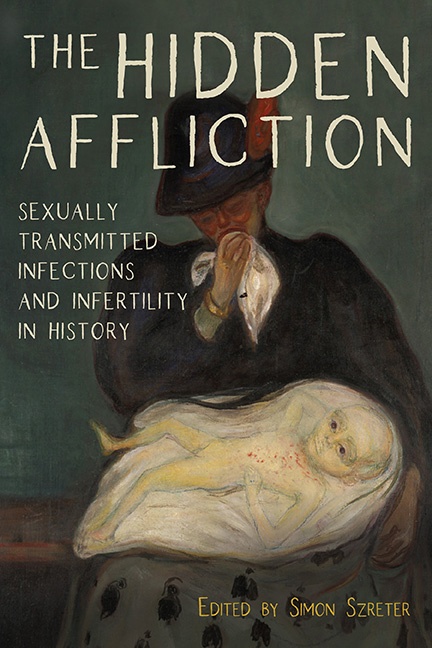Book contents
- Frontmatter
- Contents
- Acknowledgments
- Introduction
- Part One The Hidden Pitfalls in the Early Documentary Record
- Part Two The Biomedical Sciences and the History of the STI Microorganisms
- 3 Bioarchaeological Contributions to Understanding the History of Treponemal Disease
- 4 A Long-Standing Evolutionary History between Chlamydia trachomatis and Humans: Visible Ocular and Invisible Genital Variants
- 5 Chlamydia: A Disease without a History
- Part Three Population Decline in the Global South
- Part Four Infertility and the Specter of Venereal Diseases in Modern Europe
- List of Contributors
- Index
5 - Chlamydia: A Disease without a History
from Part Two - The Biomedical Sciences and the History of the STI Microorganisms
Published online by Cambridge University Press: 25 March 2020
- Frontmatter
- Contents
- Acknowledgments
- Introduction
- Part One The Hidden Pitfalls in the Early Documentary Record
- Part Two The Biomedical Sciences and the History of the STI Microorganisms
- 3 Bioarchaeological Contributions to Understanding the History of Treponemal Disease
- 4 A Long-Standing Evolutionary History between Chlamydia trachomatis and Humans: Visible Ocular and Invisible Genital Variants
- 5 Chlamydia: A Disease without a History
- Part Three Population Decline in the Global South
- Part Four Infertility and the Specter of Venereal Diseases in Modern Europe
- List of Contributors
- Index
Summary
Since the late 1990s chlamydia has been the most commonly reported sexually transmitted infection (STI) in Europe and the United States. The infection is caused by the bacterium Chlamydia trachomatis (C. trachomatis), and its common name follows a pattern established in the late nineteenth century, where an infection is named after its causal pathogen. In England in 2017 there were just over 203,116 new diagnoses, compared to 7,137 of syphilis and 44,676 of gonorrhea. Over 126,000 of the chlamydia diagnoses were made by the National Chlamydia Screening Programme, which targets fifteen to twenty-four-year-olds because the disease, which is asymptomatic in 80 percent of females infected, can lead to infertility due to blocked fallopian tubes. The disease has been equally prevalent in men, and while there has been an expectation of similar effects on seminal vesicles, there is as yet no evidence of a strong correlation between infection and male infertility. The program began in 2004, after a decade in which the reported incidence of chlamydia grew rapidly, and journalists picked up on these reports warnings of a “fertility timebomb.” Public health concern about the disease also derived from its seeming novelty and to uncertainties over its pathology. Chlamydia first became recognized as a specific STI in the 1970s, but it took until 1988 for it to become notifiable. Newly diagnosed cases were reported only routinely in STI statistics from 1990, when there were 34,000 new diagnoses. The number began to rise steeply after 1995, reaching 100,000 in 2003. The growing incidence seemed to public health officials to be both “true” and “questionable.” The increase seemed to be true because of the increase in the number of couples seeking fertility treatment, plus the pattern of chlamydia's spread seemed to fit with a view that young people were having a greater number of sexual partners. Yet it was also considered questionable because advances in treatments for infertility, notably in vitro fertilization, led to increased demand for services; also more and more cases of chlamydia were identified by improvements in the sensitivity and specificity of testing methods.
- Type
- Chapter
- Information
- The Hidden AfflictionSexually Transmitted Infections and Infertility in History, pp. 153 - 184Publisher: Boydell & BrewerPrint publication year: 2019
- 1
- Cited by

